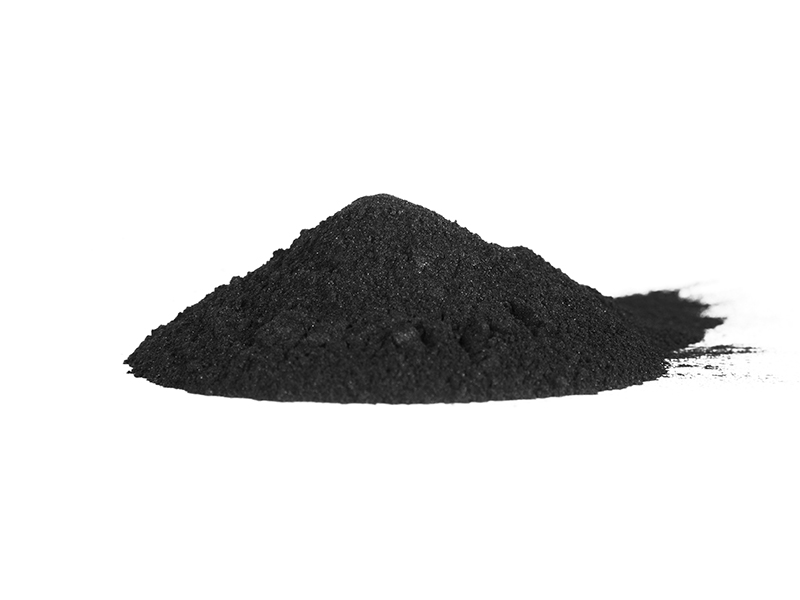Powdered activated carbon
Introduction to powder activated carbon products
Wood powder activated carbon with fruit shell and wood chips as raw materials refined, the appearance of black fine powder, non-toxic, tasteless, has a large surface area, strong adsorption ability. It is suitable for purification of water quality in sugar, pharmaceutical, beverage, wine, food, printing and dyeing, papermaking, chemical, industrial wastewater, etc. It is also widely used in decolorization, deodorization, purification, purification and sewage treatment of organic solvents. With high quality wood chips as raw materials, zinc chloride method is used for production, with developed mesoporous structure, large adsorption capacity, rapid filtration and other characteristics. It is mainly applied to various amino acid industry, refined sugar decolorization, monosodium glutamate industry, glucose industry, starch sugar industry, chemical additives, intermediates of dyes, food additives, pharmaceutical preparations and other high pigment solution decolorization, purification, deodorization, purification.
The wood powder activated carbon produced by phosphoric acid process has developed mesoporous structure, developed specific surface area, large adsorption capacity, fast filtration speed and no zinc salt. Widely used in food industry of sugar, glutamate and salt, lactic acid and salt, citric acid and salt, wine, seasoning, animal and plant protein, biochemical products, pharmaceutical intermediates, vitamins, antibiotics and other products decolorization, refining, deodorization, to remove impurities.
The injection carbon produced by our factory has the properties of less impurity, high purity, fast filtration and excellent decolorization, purification and purification. It is mainly used for decolorization, purification and removal of "heat source" of various injection agents. Can also be used with vitamin C and other API decolorization, decolorization force, fast filtration, suitable for medicine, pesticides, Chinese and western drugs decolorization, refining. And has the absorption intestinal bacteria, detoxification effect.
Technical parameters:
Characteristics of powdered activated carbon
Activated carbon is the main composition of carbon, carbon content of about 90%, usually with a variety of plant scraps (wood chips, coconut shell and bagasse, etc.) or appropriate coal or charcoal as raw materials, after special processing made. Activated carbon has many fine pores inside. The pore diameter is small, so the total surface area is large, with a strong adsorption capacity. Due to different raw materials and manufacturing methods, the variety of activated carbon is quite large, respectively suitable for different USES. The pores of powdered activated carbon can absorb the small molecules in the gas and solution with low molecular weight, but the molecules with higher molecular weight cannot enter the pores. The mesopore provides the passage into the micropore and can absorb the substances with higher molecular weight. Macropores provide both channels and adsorption. If activated carbon is used to absorb small molecules, such as some gases (poisonous gases) and low molecular weight organic matter, products with more pores can be used. However, if larger molecules are adsorbed, products with more mesopores should be selected. The pore condition of activated carbon depends on the raw material, composition, manufacturing method and conditions.
Powder activated carbon products are mainly powder and granular shape of two categories. Powdered activated carbon is a very fine powder, most of which can pass through a 200-mesh screen and most of which can pass through a 325-mesh screen. The size of the powder ranges from 1 to 150 microns (about 40 microns on average). In general, the finer the powder, the faster it adsorbs impurities. Therefore, activated carbon products are highly crushed and screened to obtain fine powder. The disadvantage of powdered carbon is that it is difficult to regenerate, so it is usually not recycled, so the consumption is large (in recent years, there are also studies to regenerate it). Granular activated carbon is usually recycled and less consumed. It has two kinds of amorphous granular and columnar granular, particle size between 0.5 ~ 4mm. The former is obtained through appropriate crushing and screening, the latter is the raw materials through granulator press molding.
Powdered activated carbon is usually made from wood chips and by chemical activation. Granule activated carbon is mostly used coal or charcoal as raw material, pulverized with adhesive (such as coal tar, lignin sulfonic acid, etc.) pressed molding, through dry distillation carbonization, and then activated processing made (or in the activation before breaking into appropriate particle size).
3. Quality and performance of powdered activated carbon
The quality of powdered activated carbon has a number of physical and chemical indicators, the main such as: water, ash, acid solution, various metal and acid root content, and its adsorption performance. For different USES of activated carbon, often use different substances and methods to test its adsorption performance, such as methylene blue adsorption value, iodine adsorption value, caramel adsorption value, quinine sulfate adsorption value. Methylene blue adsorption value is the most commonly used. Methylene blue is a kind of dark blue dye. Its adsorption capacity reflects the ability of activated carbon to adsorb small molecules. Activated carbon with a large number of micropores has a higher value. The adsorption value of caramel (or caramel decolorization rate, or molasses adsorption rate) is to reflect the adsorption performance of activated carbon to colored substances with higher molecular weight. The adsorption value of activated carbon with good performance reaches 100 ~ 110.
Domestic and foreign production of activated carbon, there is a class called "sugar activated carbon" products, it can be used in sugar factories, but also can be used in other similar industries, such as glucose solution and monosodium glutamate solution refined decolorization. Its main characteristic is that it has more mesoporous, so it is suitable for treating the solution containing more macromolecular organic matter. The activated carbon has a high caramel adsorption value.
According to the national standard (GB/ t13803.3-1999) of "activated carbon for decolorization of sugar liquid" in China, activated carbon products are classified into three categories: superior products, first grade products and second grade products. Their moisture content is less than 10%; Caramel decolorization rate is higher than 100, 90 and 80, ash content is lower than 3%, 4% and 5%, respectively (activated carbon produced by phosphoric acid process can be in 7% ~ 9%, regardless of grade), acid solution is lower than 1%, 1.5% and 2%, and iron content and chlorine content regulation. They all have pH values between 3 and 5.
Activated carbon has an aromatic ring structure and is good at absorbing aromatic organic matter (most of the colored matter in the sugar juice belongs to this category) and other organic matter containing more than three carbon atoms. It has a strong adsorption ability to non-charged substances, but a weak adsorption ability to charged substances (such as anions). The adsorption of the latter is related to the pH value of the solution: the adsorption is stronger in acidic solution and weaker in alkaline solution. Because weak acidic substances in low pH charge less or no charge, more easily adsorbed; High pH charge is strong, not conducive to adsorption. In order to avoid sucrose conversion, the sugar solution was treated with activated carbon under neutral condition. Activated carbon has a weak adsorption effect on inorganic ions, but activated carbon with phosphoric acid as activator and after appropriate carboxylation treatment can also absorb a small amount of metal ions.
The adsorption of powdered activated carbon depends on temperature. For most physical adsorption, the adsorption capacity can be large at low temperature, but the adsorption speed is slow. In most cases, the contact time between the activated carbon and the sugar solution is not long, so the adsorption is required to be carried out quickly, usually at a higher temperature, such as 70 ~ 85℃. At this temperature, generally after 15 ~ 30 minutes (mainly determined by the concentration of sugar solution), the adsorption of activated carbon is close to its maximum value.




